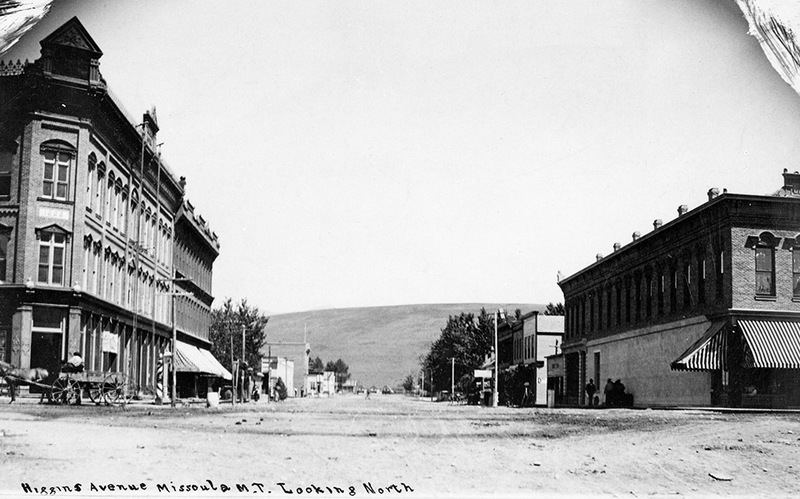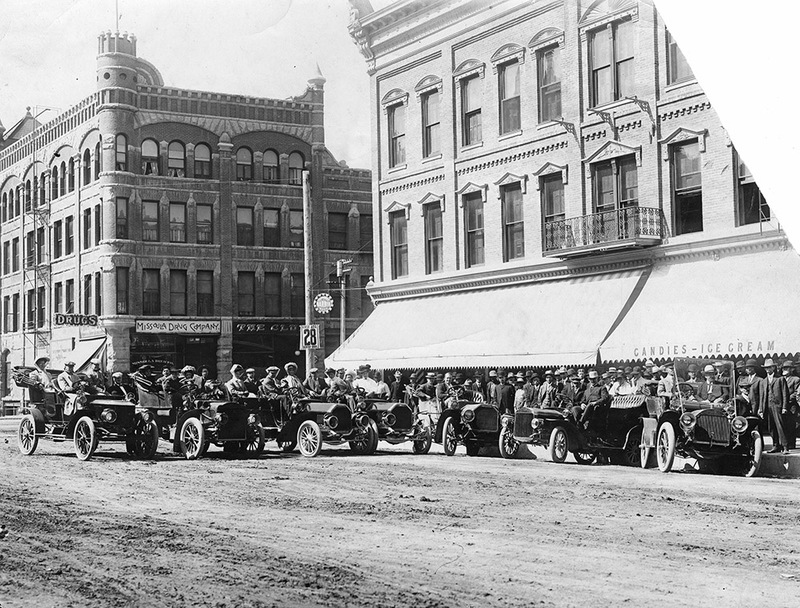Missoula Downtown Historic District

In 1865, Christopher Higgins, Francis Worden, and David Pattee constructed grist and lumber mills near where the Mullan Road (now Front Street) intersected with present day Higgins Avenue. Worden’s 1874 Carpenter Gothic home on East Pine, once a quiet residential street, commemorates this early period. Arrival of the Northern Pacific Railroad in 1883 brought new growth. Soon Western Commercial style hotels and business blocks lined Missoula’s streets, including the brick-paved Railroad Street. Noteworthy architect-designed buildings from the period included the Tudor style Missoula Hotel, the Richardsonian Romanesque style Higgins Block, and the eclectic expansion of the Missoula Mercantile (originally constructed in 1877). The economic Panic of 1893 stilled Missoula’s development. After 1900, economic recovery fostered a new building boom, especially after the 1908 arrival of the Milwaukee Road, Missoula’s second railway. High style façades topped with elaborate cornices signified the city’s coming of age. Classical civic buildings from the era include the A. J. Gibson-designed 1903 Carnegie Library and 1910 County Courthouse. Architects of statewide and regional note designed other landmark buildings within the district, including the 1910 neoclassical Independent Telephone Company, the 1921 Sullivanesque Wilma Theater, the 1937 Art Deco Zip Auto Building, and the 1941 Moderne Florence Hotel. Construction slowed during the Great Depression, but two large public works projects—the 1936 Forest Service Regional Headquarters and a 1937 addition to Missoula’s Federal Building and Courthouse—demonstrated the federal government’s importance to Missoula’s economy. The preservation of these and almost 400 other buildings in the fifty-two block district record Missoula’s history on its streets.
Images









